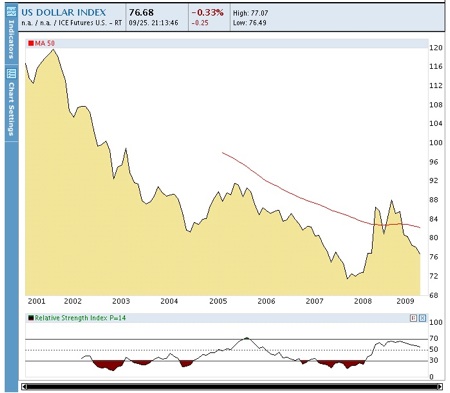
fun with figures:
PREPARING FOR CIVILIZATION’S COLLAPSE What Would a Better World Look Like?: Sharon Astyk says that we need a realistic vision of what a sustainable future would look like, and makes the argument that we need viable alternative working models — now: Why, when there is so much new attention to climate change, so much scientific consensus and so much activism, are governments so reluctant to act? It isn’t because of lack of knowledge of the long term consequences. My own take is this – that it is simply because they recognize what many climate activists have not – that their own people may agitate for climate change action now, but they do not fully grasp what it will entail – a change in way of life. There are plenty of other reasons – business interests and political realities, but the truth is that we will continue merrily on our way to disaster if the world’s politicians believe that the people don’t want them to act – not really. And it does not take a great deal of critical thought to realize that the average person, at this stage, would like, all things being equal, for politicians to take care of climate change, along with all the other of the world’s problems, without inconveniencing them, but are far less clear on what inconveniences they might be willing to tolerate…
The climate target that Monbiot used [in Heat], while cutting edge for 2006, has now been superceded. If we could just-barely-but-not-quite pull off a maintenence of modernity with a 450ppm carbon target, what are the chances of doing it with 350? None at all, I fear… And the danger of telling people that they can have all the things they want – a future for their children and an affluent present now – is that when they realize (and they are realizing right now) that this is not true, that there’s not enough money, or time or alternative energy to provide it, people will be very, very angry indeed. It is not pleasant to tell people hard truths. It is less pleasant to deal with people facing hard truths who believe they have been lied to. I believe we are seeing the early stages of the political unrest that will accompany this sense of being lied to, of having lost more than is being accounted for on both the left or the right, and I also believe quite strongly that unless a true and comprehensible story is offered, false ones will be taken up, and used as bludgeons… In order for a majority of the world’s rich people (and here I mean rich by world standards) to choose less, to actually recognize that giving their children better means choosing a life of less, there has to be a vision of what the life constitutes – and it has to be immediately accessible. It cannot require vast creative energies, because honestly, most people don’t have them. It cannot require that everyone go against the grain, because, quite honestly, most of us go with the grain. It cannot require that we be able to imagine it – you have to be able to go look at it. Learning to be Present: Drawn from Nature: From Lorianne DiSabato (thanks to Dave Bonta for the link): Last Thursday afternoon, I took my first-year writing students outside to draw in their nature journals. It was sunny and mild, and I gave them a choice of two tasks: either draw clouds or draw the lilac tree that sprawls in front of Parker Hall. It’s an exercise in seeing as much as drawing: once you stop and look, what do you see?…
It’s what both Henry David Thoreau and Clare Walker Leslie do in their journals, and it’s what I urge my students to do in their semester-long projects. Pick a topic that truly interests you and spend a semester investigating it from every conceivable angle. Really look at it, deeply and and repeatedly, noticing its nuance and details over time. Read about your topic, think about your topic, and talk to others about your topic: get to know it first-hand and up-close, in a way none of the rest of us do. Become our resident expert in the minute details of your topic and its intersection with your life… It’s a foreign concept to many of my students, this invitation to explore their own life deeply…The best topics are usually the most obscure ones, the ones that Only This Student deeply loves and is genuinely interested in. In asking my students to be intellectually curious, I’m actually asking them to take a deep and genuine interest in their own lives. I’m asking them to show up on a partly cloudy day in the shade of a sprawling tree and capture what they see.
A Guide to Unschooling: This week’s Yi-Tan conference call on unschooling featured some people (including PS Pirro and me) describing their experiences and challenges with unschooling. Host Jerry Michalski has a ton of unschooling resources in his Brain. One of the participants, Sandra Dodd provides some comprehensive resources to learn about, and start, unschooling. Example: Marin Holmes’ Principles of Unschooling: 1. Let Go and Trust: Let go of learning, as a focus, a concern, an issue—trust that it happens. Let go of control of your child—trust they know what they need. Some examples: no chores, no bedtimes, no eating controls, no limits on media.
2. Joy and Connection as Primary Goals: Parent’s job (since it isn’t the controller of the child) is something like being the Provider of Joy. When in doubt, go for the option that offers the most joy. Family Relationships: Make deposits here, not withdrawals. Relationships based on respecting needs and interests, empathy and fun together. Being each other’s allies not adversaries. 3. Being a Better Person: Principles over Rules – you must model principles (rather than enforce rules) therefore you must LIVE them (which makes you a better person). Some examples: Freedom, Golden Rule, Kindness, Respect. Staying in the Moment – mindfulness, play, connection, and joy all happen in the present moment, not the future (worry) nor the past (fears). Kids are already the masters of this so learn from them. Childhood is not a preparation for life, it IS life. Being someone they want to spend time with. 4. Tools for Daily Life: Create a Rich Environment: strew stuff they might like (but don’t be attached to them liking it). Ride the Waves: of interests and passions (yours and theirs), as well as the flow of the day. Follow Your Heart: and encourage them to follow theirs. Creative Brainstorming: about any situation until everyone’s needs can be met as well as possible. LIVING BETTER Home in the Jungle: This Hawai’ian permaculture community looks like a wonderful place to live. Great music too. Thanks to Tree for the link, and the one that follows (and also for the Butterfly Nebula link later in this post). Mali’s Gift Economy: The economy of Mali, consistent with that of many indigenous cultures, is based on paying gifts forward, not on exacting a ‘market value’ of exchange for every transaction. Meanwhile, Melissa Holbrook Pierson shows that some communities in our mercenary world understand the gift economy too. POLITICS AND ECONOMICS AS USUAL The Disease of Death: Rob Paterson talks about the elephant in the room in the health care debate: That we treat dying as if it were a curable disease, and lavish half of all health care spending on patients in their final year of life, mostly to prolong the inevitable, uncomfortably, in a cold, clinical institutional environment. GE Pushes Coal as Clean and Sexy: You’ll have to suppress your gag instinct when you watch this pro-coal commercial for GE, which Keith Farnish says stands for Greenwashing Experts. The ad was pulled not for its barefaced deception but because viewers found it in bad taste. I’ll say. Get a Permit, Stay Way Over Here, Don’t Get Out of Line, and We’ll Let You Protest: Pittsburgh offered G20 protestors a sandbox to demonstrate in, miles from the G20 summit, where they could be safely ignored. When the protestors declined, they were gased and arrested. Nothing new here. Thanks to Malik Datardina for the links. NYT Belatedly Warns of Dangers of Corporate Personhood: It only took them a century, but the NYT has finally acknowledged that the court decision that gave corporations the rights of personhood, without the commensurate responsibilities, was a mistake. The statement came as the extreme right-wing US supreme court is about to extend corporate rights even further. FUN AND INSPIRATION From Meg Wheatley (via Sheri Herndon):
“In order to improve the health of a system, connect it to more of itself.”
From Dave Bonta: THE DARK NIGHT
I am listening for an owl that doesn’t call. |








thanks for Hawaii gorgeous link